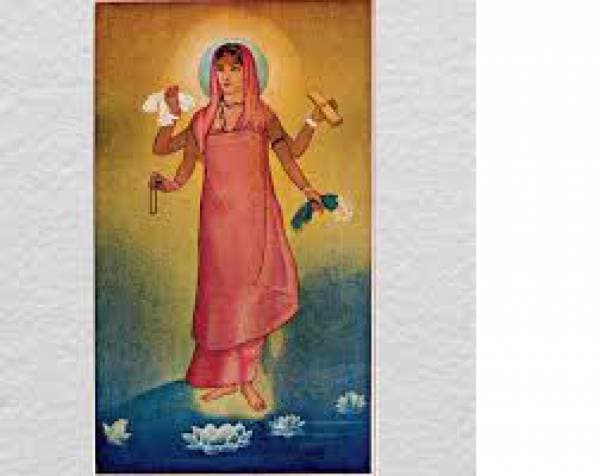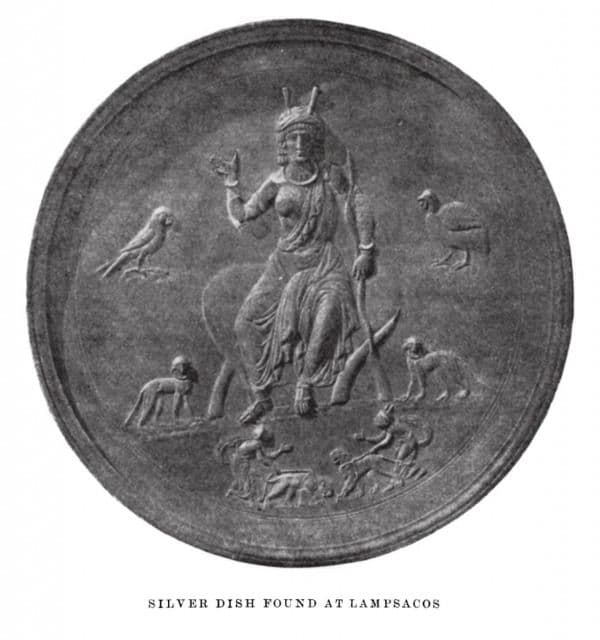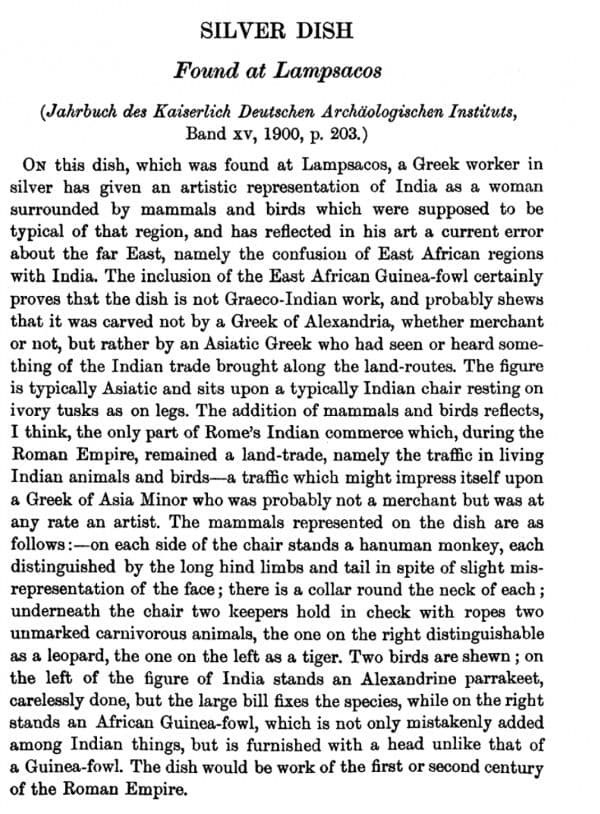Earliest Known Painting of Bharat Mata
This is the earliest known painting of Bharat Mata (c.1905) drawn by Abanindranath Tagore(Rabindranath Tagore’s nephew). Bharat Mata is depicted as a four-armed Hindu goddess wearing Sannyasin robes and holding Vedas and Mala in this painting.
The hand holding Vedas represents, according to Sister Nivedita, sikhsha(education). The one holding Mala(rosary) represents Diksha(initiation), the hand holding paddy represents anna(food), and the hand holding cotton represents Vastra (clothes). This was traditional Bengali attire.


From the book, The commerce between the Roman Empire and India, page 144-145

SILVER DISH
Found at Lampsacos (Jah,rbuch, des Kaiserlich Deutsch,en Archeiologischen Instituts, Band xv, 1900, p. 203.)
ON this dish, which was found at Lampsacos, a Greek worker in silver has given an artistic representation of India as a woman surrounded by mammals and birds which were supposed to be typical of that region and has reflected in his art a current error about the far East, namely the confusion of East African regions with India. The inclusion of the East African Guinea-fowl certainly proves that the dish is not Graeco-Indian work, and probably chews that it was carved not by a Greek of Alexandria, whether merchant or not, but rather by an Asiatic Greek who had seen or heard something of the Indian trade brought along the land-routes. The figure is typically Asiatic and sits upon a typically Indian chair resting on ivory tusks as on legs. The addition of mammals and birds reflects, I think, the only part of Rome’s Indian commerce which, during the Roman Empire, remained a land-trade, namely the traffic in living Indian animals and birds—traffic which might impress itself upon a Greek of Asia Minor who was probably not a merchant but was, at any rate, an artist. The mammals represented on the dish are as follows:—on each side of the chair stands a hanuman monkey, each distinguished by the long hind limbs and tail in spite of slight misrepresentation of the face; there is a collar around the neck of each; underneath the chair, two keepers hold in check with ropes two unmarked carnivorous animals, the one on the right distinguishable as a leopard, the one on the left as a tiger. Two birds are shown; on the left of the figure of India stands an Alexandrine parakeet, carelessly done, but the large bill fixes the species, while on the right stands an African Guinea-fowl, which is not only mistakenly added among Indian things, but is furnished with a head unlike that of a Guinea-fowl. The dish would be work of the first or second century of the Roman Empire.
Source: